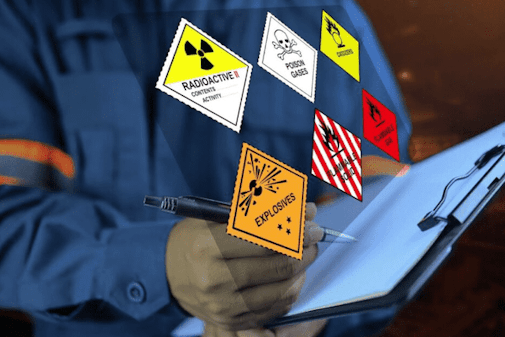
Blog
- Health & Safety
Home
Resources
Health & Safety

Michelle Ann Zoleta, Health & Safety Team Manager
(Last updated )

Michelle Ann Zoleta, Health & Safety Team Manager
(Last updated )
As a Canadian employer, providing a safe, healthy work environment is a legal obligation under the law. Some jobs, just by their nature, have a level of danger or hazard involved that may be above average. However, even with such jobs, there are protocols and measures put in place to ensure the safety of workers and those around them.
If your worker decides to exercise their right to refuse unsafe work, it is important to understand this right and the steps federally regulated employers are required to take in response.
According to the Canada Labour Code (Part II), employees are legally entitled to stop work if they have reason to believe a dangerous situation exists. This could include:
There are exceptions for employees working on a ship or operating an aircraft. In this case, if the employee brings a situation to your attention, you should decide how to safely proceed after considering the safety of the aircraft or ship and those on board.
If an employee exercises their right to refuse unsafe work, employers must take the following actions:
1. Investigate immediately – Employers must conduct an immediate thorough investigation once the employee refuses to work due to perceived danger. Employers are legally obligated to address the concern right way.
The employee’s complaint should be documented, including their reason for the refusal and why they believe work is dangerous. The issue must be investigated in the presence of the employee. During the investigation, the employer should document the employee’s complaints, hazards identified, and any actions taken.
2. Decide on the work refusal – Once the investigation is complete, the employer should determine if the employee’s claims are valid and there is indeed danger. If a hazard has been identified, employers must take steps to remedy the situation. Findings and actions taken must also be communicated to the employee and the health & safety committee or representative.
If no danger has been identified, the employee should be informed and asked to return to work.
3. If the employee disagrees – If the employee believes work is still dangerous despite the employer’s findings, it is within their right to continue refusing to work. The employee must then notify the Joint Health & Safety Committee (JHSC) or representative who will conduct their own independent investigation in the presence of the employee.
The JHSC will then provide a report of the findings and recommendations to the employer. After reviewing the report from the JHSC or rep, the employer will decide the appropriate action based on:
In all 3 scenarios, the employer shall notify the employee in writing.
4. If the employee still refuses – The employee is within their right to continue refusing to work if they believe the danger persists. The employer is then responsible for notifying the Minister of Labour and providing the Minister with copies of the two investigative reports. The workplace JHSC or representative shall also be notified of the continued refusal.
Once the Minister has been informed of the employee’s refusal to work, the Minister will take one of two decisions:
1. Not investigate – The Minister will refuse to investigate if it is believed that the issue may be better addressed by another legislation, is trivial, frivolous, or vexatious, or made in bad faith.
2. Investigates – If the Minister investigates, it will be conducted in the presence of the employer, the employee, and a member of the workplace committee appointed by employees. The employee may still exercise their right to refuse unsafe work while the Minister investigates. However, the employer may assign another employee to perform the refused work once:
When investigating, the Minister will also consider if there has been a previous or ongoing investigation in relation to the same issues and employer. The Minister will then decide whether or not to rely on the findings of the previous investigations or if the current investigation can be combined in order to reach a singular conclusion.
Once the investigation is complete, the Minister will make one of three reasonings:
1. Danger exists – If the Minister finds that the reported danger exists, directions will be issued with amendments that should be followed. The employee may continue to refuse to work until the directions are complied with.
2. Danger exists but refusal not permitted – This finding is typically issued in accordance with section 128 (2) of the Canada Labour Code which states that a refusal is not permitted as it puts lives, health, or safety of another person directly in danger (e.g., a pilot operating an aircraft or captain sailing a ship) or is a normal condition of employment. In this case, the employee is no longer entitled to refuse work.
3. Danger does not exist – If the Minister finds that danger does not exist, the employee is no longer entitled to refuse to work.
The Minister’s ruling is issued in writing. Following the written decision, the employee, employer, and workplace representative will each receive a copy of the written report within ten (10) days of completion.
In the event that the employer disagrees with the Minister's direction, they have thirty (30) days after the direction was issued to appeal. Appeals must be submitted in writing to an appeals officer.
An unsafe work environment can disrupt productivity, cause potential harm to employees, and ultimately affect your bottom line. Our experts can help you develop a robust health & safety program to keep your workers safe and your business compliant. Our team of expert consultants can help you draft, update, and review workplace safety company policies, as well as assist you with any HR, health & safety, and employee issues that may arise. Call us at 1 (833) 247-3652 today to learn more about how our services can benefit your business.
Home
Resources
Health & Safety
Find out what 6,500+ businesses across Canada have already discovered. Get round-the-clock HR and health & safety support with Peninsula.
